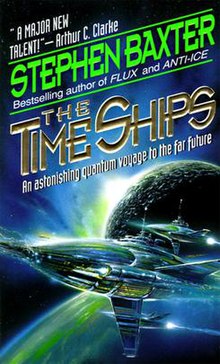
The Time Machine is a post-apocalyptic science fiction novella by H. G. Wells, published in 1895. The work is generally credited with the popularization of the concept of time travel by using a vehicle or device to travel purposely and selectively forward or backward through time. The term "time machine", coined by Wells, is now almost universally used to refer to such a vehicle or device.

Timothy Thomas Powers is an American science fiction and fantasy author. His first major novel was The Drawing of the Dark (1979), but the novel that earned him wide praise was The Anubis Gates (1983), which won the Philip K. Dick Award, and has since been published in many other languages. His other written work include Dinner at Deviant's Palace (1985), Last Call (1992), Expiration Date (1996), Earthquake Weather (1997), Declare (2000), and Three Days to Never (2006). Powers has won the World Fantasy Award twice for his critically acclaimed novels Last Call and Declare. His 1987 novel On Stranger Tides served as inspiration for the Monkey Island franchise of video games and was optioned for the fourth Pirates of the Caribbean film.
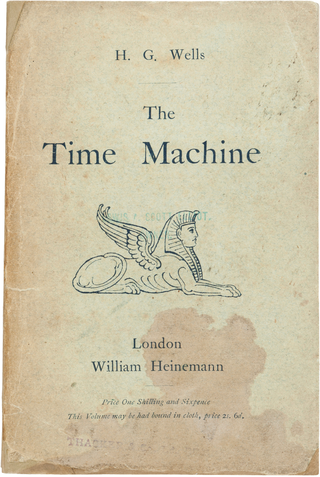
Time travel is the hypothetical activity of traveling into the past or future. Time travel is a widely recognized concept in philosophy and fiction, particularly science fiction. In fiction, time travel is typically achieved through the use of a hypothetical device known as a time machine. The idea of a time machine was popularized by H. G. Wells' 1895 novel The Time Machine.

Jack McDevitt is an American science fiction author whose novels frequently deal with attempts to make contact with alien races, and with archaeology or xenoarchaeology. Most of his books follow either superluminal pilot Priscilla "Hutch" Hutchins or galactic relic hunters Alex Benedict and Chase Kolpath. McDevitt has received numerous nominations for Hugo, Nebula, and John W. Campbell awards. Seeker won the 2006 Nebula Award for Best Novel.
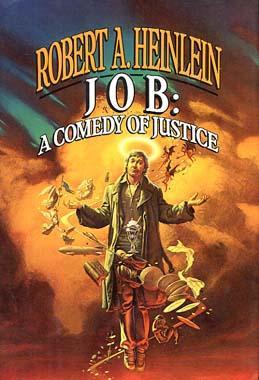
Job: A Comedy of Justice is a novel by Robert A. Heinlein published in 1984. The title is a reference to the biblical Book of Job and James Branch Cabell's book Jurgen, A Comedy of Justice. It won the Locus Award for Best Fantasy Novel in 1985 and was nominated for the Nebula Award for Best Novel in 1984, and the Hugo Award for Best Novel in 1985.

Gene Rodman Wolfe was an American science fiction and fantasy writer. He was noted for his dense, allusive prose as well as the strong influence of his Catholic faith. He was a prolific short story writer and novelist, and won many literary awards. Wolfe has been called "the Melville of science fiction", and was honored as a Grand Master by the Science Fiction and Fantasy Writers of America.

Jeff VanderMeer is an American author, editor, and literary critic. Initially associated with the New Weird literary genre, VanderMeer crossed over into mainstream success with his bestselling Southern Reach Trilogy. The trilogy's first novel, Annihilation, won the Nebula and Shirley Jackson Awards, and was adapted into a Hollywood film by director Alex Garland. Among VanderMeer's other novels are Shriek: An Afterword and Borne. He has also edited with his wife Ann VanderMeer such influential and award-winning anthologies as The New Weird, The Weird, and The Big Book of Science Fiction.
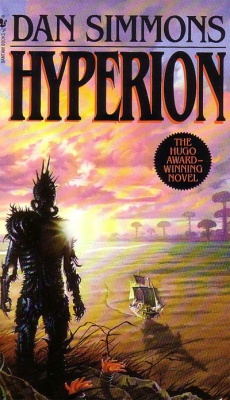
The Hyperion Cantos is a series of science fiction novels by Dan Simmons. The title was originally used for the collection of the first pair of books in the series, Hyperion and The Fall of Hyperion, and later came to refer to the overall storyline, including Endymion, The Rise of Endymion, and a number of short stories. More narrowly, inside the fictional storyline, after the first volume, the Hyperion Cantos is an epic poem written by the character Martin Silenus covering in verse form the events of the first two books.
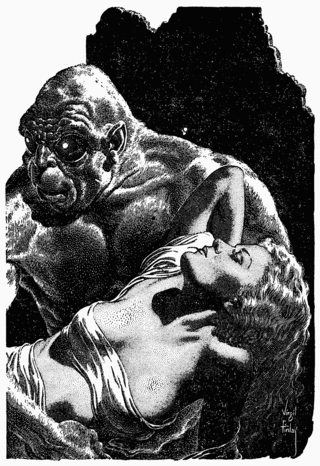
The Eloi are one of the two fictional post-human races, along with the Morlocks, in H. G. Wells' 1895 novel The Time Machine.

Morlocks are a fictional species created by H. G. Wells for his 1895 novel The Time Machine. They are the story's main antagonists. Since their creation by H. G. Wells, the Morlocks have appeared in many other works such as sequels, films, television shows, and works by other authors, many of which have deviated from the original description.
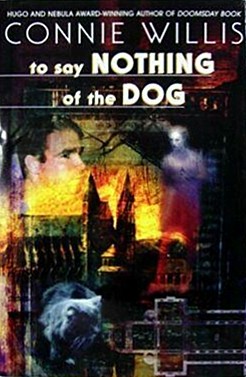
To Say Nothing of the Dog: or, How We Found the Bishop's Bird Stump at Last is a 1997 comic science fiction novel by Connie Willis. It uses the same setting, including time-traveling historians, which Willis explored in Fire Watch (1982),Doomsday Book (1992), and Blackout/All Clear (2010).

Ian McDonald is a British science fiction novelist, living in Belfast. His themes include nanotechnology, postcyberpunk settings, and the impact of rapid social and technological change on non-Western societies.
Social science fiction is a subgenre of science fiction, usually soft science fiction, concerned less with technology/space opera and more with speculation about society. In other words, it "absorbs and discusses anthropology" and speculates about human behavior and interactions.
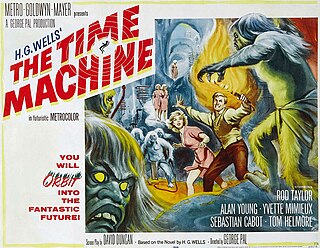
The Time Machine is a 1960 American period post-apocalyptic science fiction film based on the 1895 novella of the same name by H. G. Wells. It was produced and directed by George Pal, and stars Rod Taylor, Yvette Mimieux, and Alan Young. The story is set in Victorian England and follows an inventor who constructs a machine that enables him to travel into the distant future. Once there, he discovers that mankind's descendants have divided into two species, the passive, childlike, and vegetarian Eloi and the underground-dwelling Morlocks, who feed on the Eloi.

The Time Machine is a 2002 American post-apocalyptic science fiction film loosely adapted by John Logan from the 1895 novel of the same name by H. G. Wells and the screenplay of the 1960 film of the same name by David Duncan. Arnold Leibovit served as executive producer and Simon Wells, the great-grandson of the original author, served as director. The film stars Guy Pearce, Orlando Jones, Samantha Mumba, Mark Addy, and Jeremy Irons, and includes a cameo by Alan Young, who also appeared in the 1960 film adaptation. The film is set in New York City instead of London, and contains new story elements not present in the original novel nor the 1960 film adaptation, including a romantic subplot, a new scenario about how civilization was destroyed, and several new characters such as an artificially intelligent hologram and a Morlock leader.
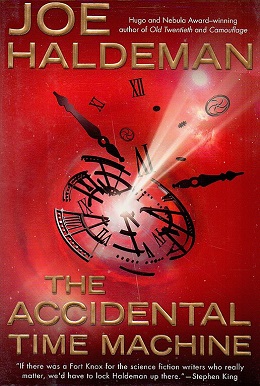
The Accidental Time Machine is a science-fiction novel written by Joe Haldeman and published by Ace Books in 2007. The story follows protagonist Matthew Fuller, a physics research assistant at the Massachusetts Institute of Technology, as he accidentally creates a machine that can only jump ahead in time, by exponentially longer periods each time. Fuller travels to the year 2252 where he finds society has been decimated by war and become a theocracy based on the Second Coming of Jesus which occurred 71 years earlier, and to the year 4346 where he finds society is ruled by an artificial intelligence. Fuller is joined by Martha from 2252 and La from 4346 traveling further into the future until they meet other time travelers who are able to send them back in time. The novel explores themes of societal and individual susceptibility to forms of autocracy. The novel was a finalist for a Nebula Award and a Locus Award.

There Will Be Time is a science fiction novel by American writer Poul Anderson. It was published in 1972 in a hardback edition by Doubleday and in 1973 in a paperback edition by New American Library.
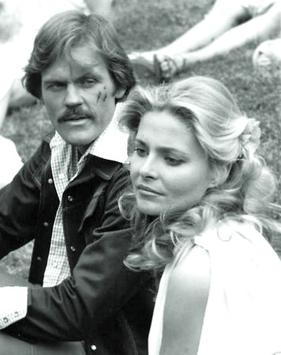
The Time Machine is a 1978 American made-for-television science fiction-adventure film produced by Sunn Classic Pictures as a part of their Classics Illustrated series. The film stars John Beck and Priscilla Barnes, and was broadcast November 5, 1978 during the November Sweeps on NBC.
Weena is a fictional character in the novel The Time Machine, written by H. G. Wells in 1895 on the concept of time travel. In the story, an unnamed time traveler travels to 802,701 A.D. using his time machine, to find that humans have evolved into two species: the Eloi, the leisure class; and the Morlocks, the working class. He meets an Eloi girl named Weena, whom he takes on an expedition and loses in his battle against the Morlocks.

The Core of the Sun is a "Finnish weird" novel by Johanna Sinisalo, originally published in 2013 with the title Auringon ydin. It was translated into English by Lola Rogers in 2016.
